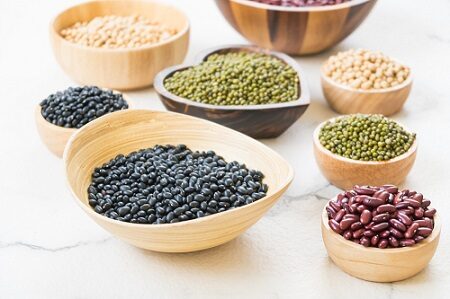When one thinks about a weight loss diet, a lot of importance is given to the consumption of wheat and rice. Millets are rarely talked about though they are a lot more healthy and nutritious when compared with those two.
Millets are gluten-free healthy whole grains, says dietician Avni Kaul, which are filled with protein, fibre, and antioxidants. They belong to the Poaceae family, usually known as the grass family. The food grain has been a part of the Indian diet since times immemorial, but now it has gained huge popularity in the western world, due to its wonderful health benefits. Here are the types of millets that you need to include in your diet when trying to reduce weight.
Top weight loss dietician Avni Kaul suggests eating the following millets if you want to reduce weight.
Jowar (Sorghum)
Sorghum or Jowar is filled with a variety of nutrients that include Vitamin B, magnesium, and antioxidants -flavonoids, phenolic acids, and tannins. The B vitamins have a key role in enhancing the metabolism and boosting the quality of hair and skin, while magnesium is good for bone and heart health. Furthermore, 96 grams of Jowar provides around 20% of the recommended daily fibre consumption. Fibre promotes your gut health, stabilizes your blood sugar levels, and helps weight management.
Bajra (Pearl Millet)
Bajra or pearl millet is loaded with a variety of nutrients such as protein, fibre, magnesium, iron, and calcium. This food is low in calories and one of the finest choices of grain when you are trying to reduce weight. The fibre content inside it keeps you fuller for a longer duration without hiking your daily calories count. Regular consumption of it can also reduce the risk of Type 2 Diabetes, certain types of cancer, manage cholesterol, and prevent asthma.
Ragi (Finger Millet)
Ragi is rich in iron, a trace mineral, needed by the human body to form haemoglobin in the red blood cells. It also has the highest quantity of calcium and potassium. Being high in fibre content, it takes time to get digested in the stomach, consequently one feels fuller for a longer time. Studies also suggest that ragi is beneficial for people suffering from diabetes as it does not increase the blood sugar level. Because of the high amino acids content, this food grain can also be given to children for brain development.
Kangni (Foxtail Millet)
Kangni is usually, available as semolina or rice flour. Rich in iron and calcium, it boosts the immune system and balances the blood sugar level. It is rich in complex and dietary carbohydrates. Both these aspects make it a good food option for those trying to shed weight. Other benefits of consuming foxtail millet daily include low cholesterol levels, better digestion, and good heart health.
Rajgira (Amaranth)
Rajgira is an ancient grain that has gained huge popularity in recent times. This grain is high in fiber, protein, phosphorus, magnesium, and iron. Amaranth has a high quantity of manganese, exceeding one’s daily nutrient needs in only one serving. This trace mineral enhances brain function and safeguards against specific neurological conditions. The protein and fiber in it helps to build muscles and maintain digestive health.




